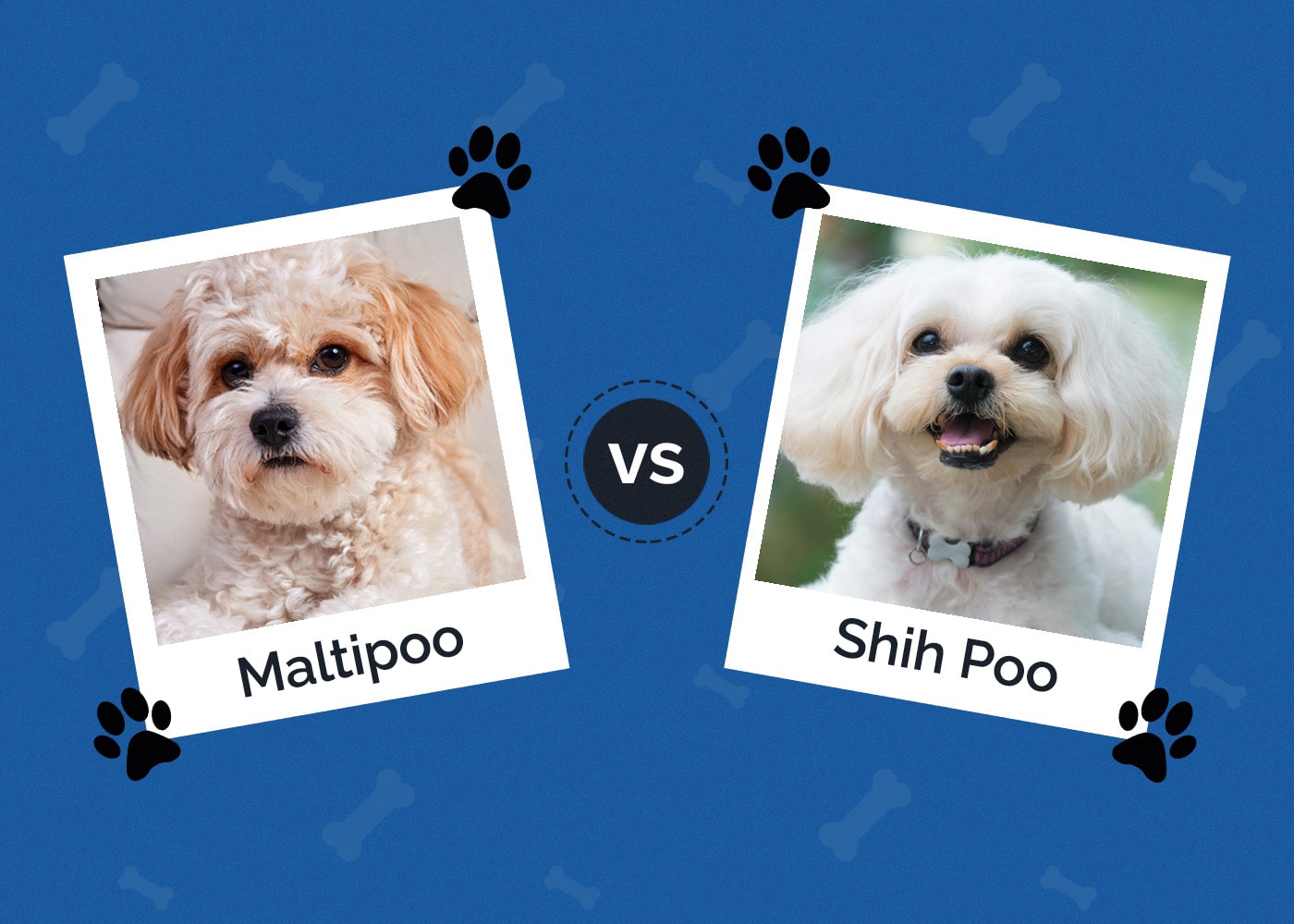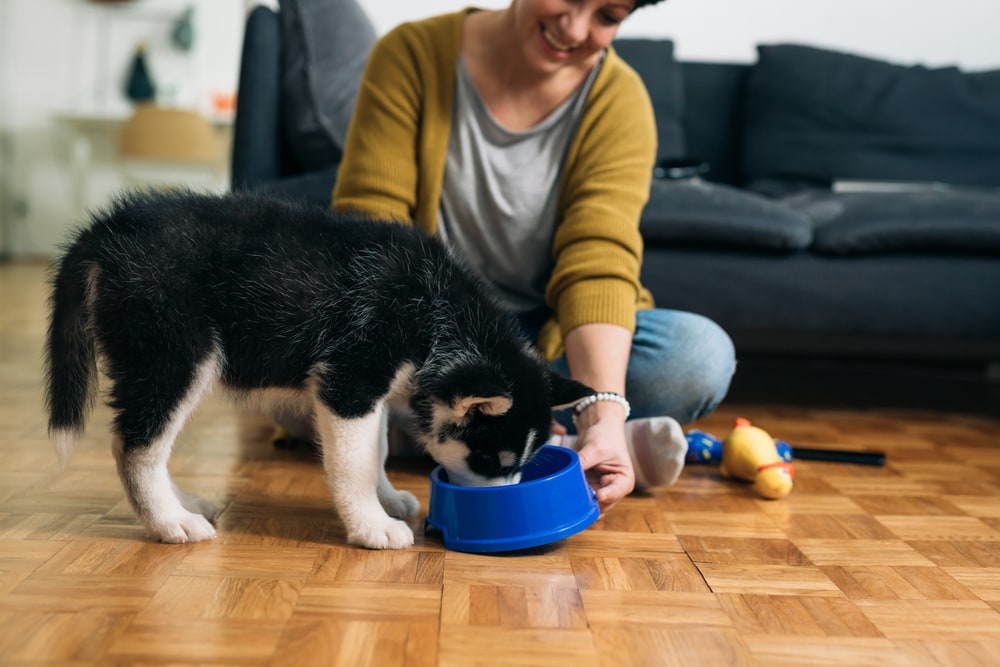How to Potty Train a German Shepherd Puppy: 10 Simple Steps

Updated on
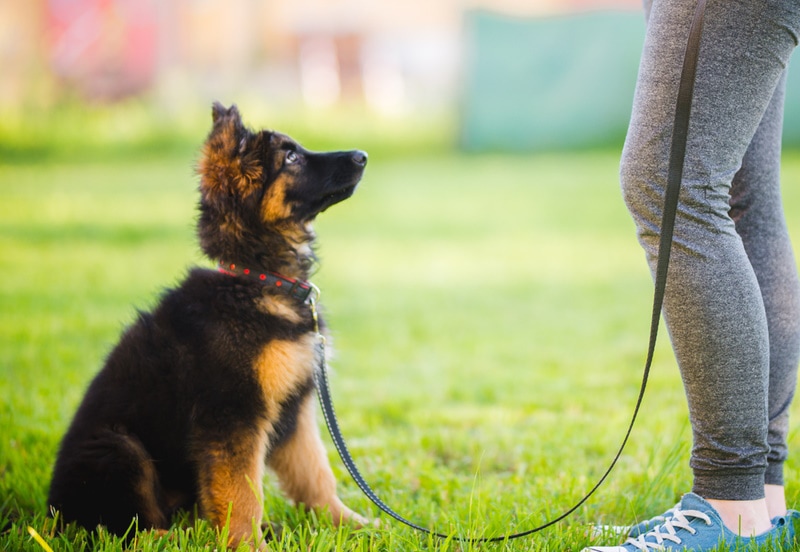
German Shepherds are one of the most intelligent and popular dog breeds in the world. While bringing one of these adorable dogs into your home is fun and exciting, it’s also a big challenge. No matter how adorable they are, puppies are a lot of work. This is especially true when it comes to potty training. After a few accidents and potentially a few tears from puppy parents, you may feel like giving up. However, that’s not doable. Luckily, we’re here to help. Below, we’re going to take a look at 10 steps to help you potty train your German Shepherd puppy so both of you make it through the experience with your nerves intact.
Before You Get Started
Of course, there are a few things you should know before you take on a new puppy’s potty training. The most important thing, however, is to be prepared. Several techniques for potty training also come with different types of needed materials. Here’s a look at different things you will need to help your German Shepherd puppy become successfully potty trained.
- Puppy pads (if you choose to use them)
- Crate
- Treats
- Collar
- Leash
- Cleaning supplies such as wipes
Another thing you’ll need to do before beginning potty training is prepare your home. If a puppy has access to the entire house, they are more likely to find places to sneak away and use the potty. Instead, determine an area your puppy can play in and block off the rest of the house. This will help you keep an eye out for accidents and be able to gauge your puppy’s needs better.
The 10 Tips on How to Potty Train a German Shepherd Puppy
1. Create a Routine
When it comes to puppies, they aren’t known for holding their bladders and bowels for long periods. This can make creating a routine or schedule easier. In most situations, there are particular times when your puppy should be taken out. Let’s take a look at those below.
- When a puppy first gets up in the morning, they are going to need a potty break after holding their bladders throughout the night.
- You’ll also want to take your puppy outside at night before they turn in for rest.
- Each time your puppy naps, they’ll need a quick trip to the potty.
- Your puppy will also need to go potty after each meal or after drinking. This is why having scheduled meal times is so important.
- Take puppies outside after play or training sessions or whenever they get excited.
- Be on the lookout for snuffling around. Puppies tend to get a bit more active and start sniffing around the area when they need to relieve themselves.
- Other than these important times, you should plan on taking your puppy out every 2 hours. As they grow the time between potty breaks will increase.
Here’s a sample of how often a German Shepherd puppy should go outside according to their age. Of course, there are instances when puppies will need to potty other than a scheduled time.
| Puppy’s Age | How Often They May Need to Potty |
| 8 weeks | Every 2 hours |
| 10 weeks | Every 2 ½ hours |
| 12 weeks | Every 3 hours |
| 14 weeks | Every 3 ½ hours |
| 16 weeks | Every 4 hours |
2. Provide a Good Diet
We mentioned in step 1 that puppies should be taken outside after eating or drinking. This is thanks to them having an immature digestive system and small bladders. Building off this same thought, your puppy should be given a high-quality diet. You’ll also want to provide small meals, three times a day. This will help ensure they are getting all the nutrition they need, taking in enough calories to keep up with their high levels of energy, and helping them stick to a schedule or routine when it comes to their potty training.
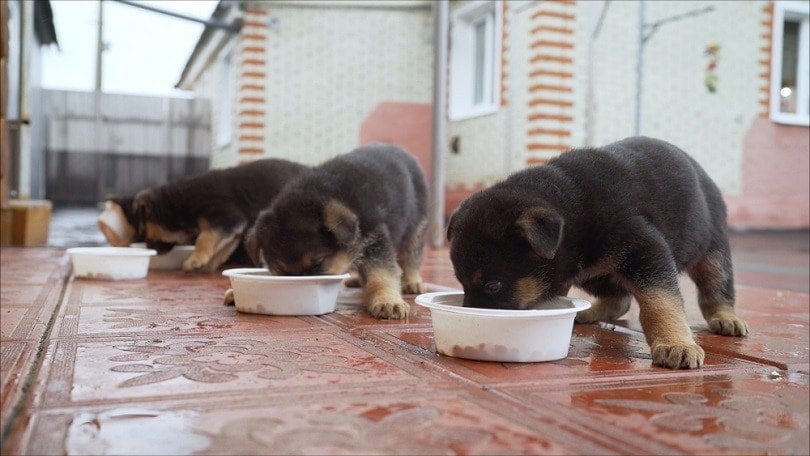
3. Teach Your Puppy to Like Their Crate
Using a crate can help make potty training much easier. German Shepherd puppies, like most puppies out there, don’t like going potty in places where they eat or sleep. Using a crate during potty training uses this fact to your advantage. However, the last thing you want is for your puppy to be scared of their crate or dislike it. An inviting crate with a favorite blanket and toys is an ideal environment for your puppy to visit. The idea is that they see the crate as a safe and secure spot to go and rest in.
Here are a few other tips for helping your puppy like their crate.
- Never force your puppy into a crate.
- Allow your puppy time to explore their crate and see that it isn’t scary.
- Feed your puppy at least one meal a day in their crate (you can also make use of feeder toys for this as well).
- Reward your puppy with treats when they spend time in their crate willingly.
- Don’t leave your puppy in the crate too long or an accident will happen.
- Teach your pup a verbal command for using their crate.
- Always praise your puppy when they go inside the crate and give them a bit of time before you close the door behind them.
- Only open the door to the crate when they are calm and not if they are scratching and barking. You will need to be nearby so you can let your pup out, before they get frustrated.
4. Choose a Potty Area
Another important part of your puppy’s potty routine should be a designated area to do their business. Whether you take your puppy into the yard on a leash or simply let them rush out into a fenced area, most dogs prefer not to use the bathroom in areas they frequent. Instead, when you take them out go to an inconspicuous spot and allow them to use the bathroom there instead.
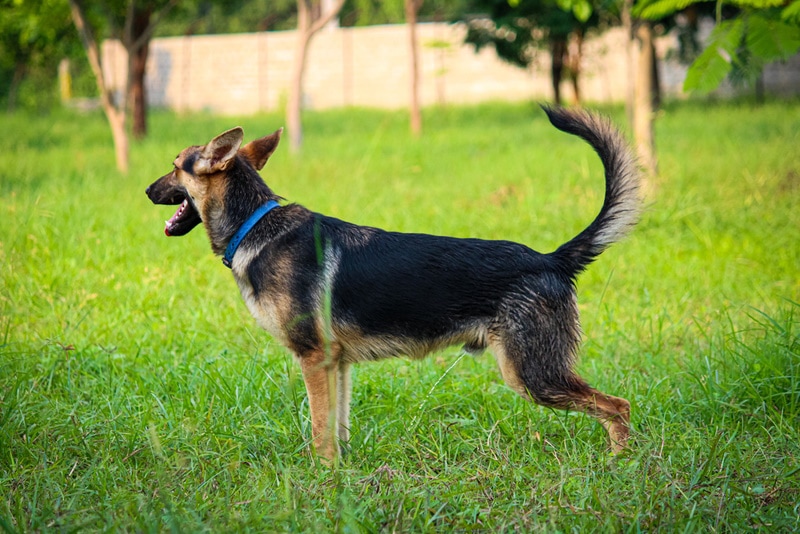
5. Puppy Pads (Optional)
Puppy pads are a personal choice when it comes to potty training your puppy. You’ll find that people either love using puppy pads or are totally against them. To cover all our bases, we’re also going to mention them. If puppy pads seem like a good idea to you, make sure to use enough of them. Puppies aren’t great with aiming. This is the best way to help protect your floor. You’ll also want to place the puppy pad near the door you plan on using when you do begin letting your dog outside. This makes it easier to transition from puppy pad training to housebreaking. Also, make sure you replace soiled puppy pads straight away. A dirty puppy pad may keep your puppy from using it again.
6. Learn When Your Puppy Is Telling You They Need to Go
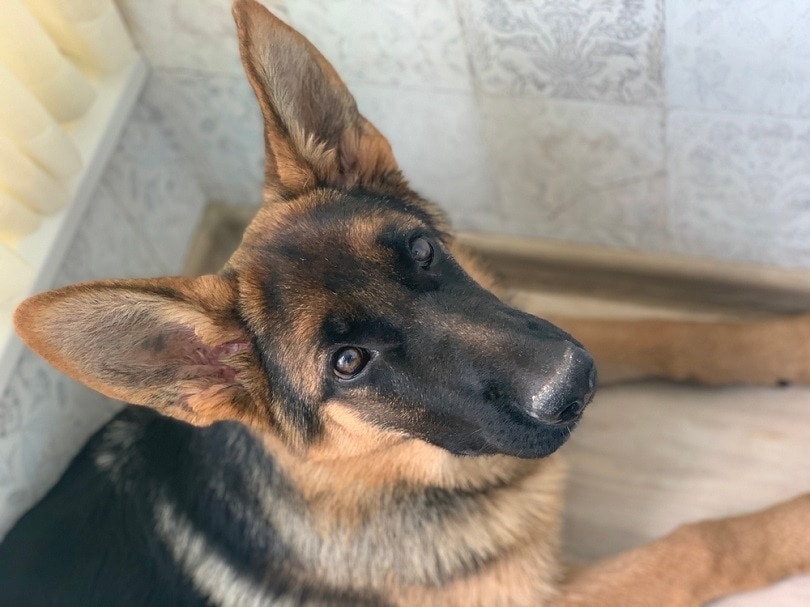
Puppies are fun to watch. They love to play and get into things; however, when it comes to their potty dance, you need to learn it quickly. Not all puppies are the same. Each one will have a different way of acting when they are ready to go potty. Let’s take a look at a few signs your German Shepherd pup may give you when it’s time for them to go potty. If you see any of these signs, take your puppy outside immediately to avoid accidents in the home.
- Abruptly stops doing what they are doing and begin to wander around
- Begins sniffing the floor
- While sniffing, the puppy begins to circle
- Digs or scratches on the carpet (especially after sniffing and circling)
- Your puppy wanders to an area where they’ve previously had an accident
- Paces near the door where they go outside to potty
- Looks around furtively like they are about to do something sneaky
7. Make Use of Cue Words
When you’ve learned your puppy’s potty dance, start trying to implement cue words. Many people use the phrase “go potty” or simply “potty.” Both of these are acceptable. You may even want to come up with your own fun cue word that’s unique to you and your pup. That’s fine too. The key is to use this cue word when your puppy is squatting and several times while they do their business. This will help them associate that word with time to use the potty. It can be useful to have a different cue word for wees and another one for poos.
8. Keep Things Positive
Each time your puppy goes potty, make sure you shower them with praise and even provide a treat. This will help your pup associate good things with going potty. Never scold your puppy when accidents happen. This can set your training back and make things more difficult in the long run.

9. Be Prepared for Cleanups
Yes, accidents will happen. Remember, your German Shepherd puppy is learning. If you catch your puppy going potty inside the house, you must intervene. Don’t yell or scream at your puppy as this will scare it. Instead, use a corrective word like “no, no” or “ah”. Then you need to scoop up your puppy and quickly get them outside to the designated potty area. If your puppy eliminates outside, make sure they get praised and rewarded like usual. Yes, they had an accident but it was corrected. After you’ve allowed your puppy a little outside time, use an enzymatic cleaner to thoroughly clean the accident area. This will help keep your puppy from returning to that spot to use the potty.
10. Stay Persistent
Potty training can be difficult, but you must be consistent. The time it takes for potty training depends on you and your puppy. You must be determined to be successful. If you have this persistence and treat your puppy accordingly, potty training shouldn’t take long at all.
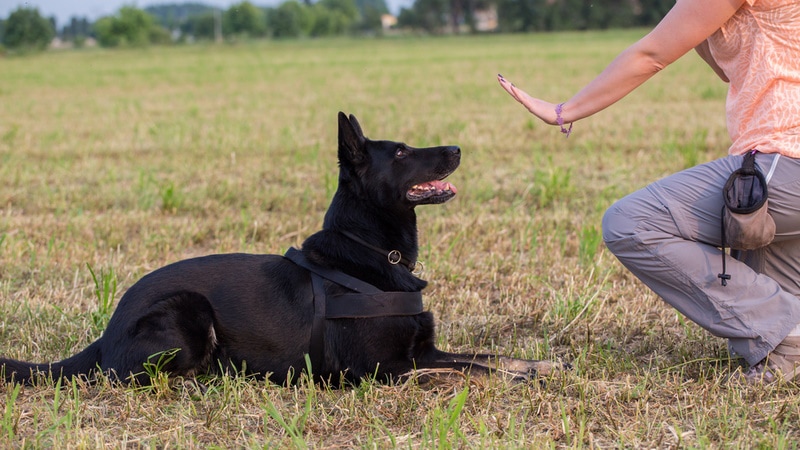
Final Thoughts
With these tips, you can successfully help your German Shepherd puppy potty train. Remember, this dog breed is highly intelligent but they need consistency in their lives. While a lot of training depends on your dog’s abilities, your level of commitment is also very important. Before long, you’ll have a well-trained German Shepherd as a best friend.
Featured Image Credit: Jus_Ol, Shutterstock



